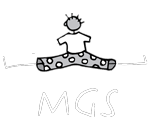 Breathing… if you’re alive you must be pretty good at it right?
Breathing… if you’re alive you must be pretty good at it right?
We all just need to stop and take a big deep breath right?
Surprisingly, for many of us, these statements are not actually true. The varied symptoms of incorrect breathing patterns are incredibly common. These include but are not limited to anxiety, foggy brain, tiredness, feeling as though you can’t get enough air, bed wetting, increased overnight toilet trips, neck pain, back pain, hip pain, headaches, excessive sweating, cold and clammy hands and feet. Good quality breathing is essential for you to function both physically and mentally, at your best.
So what does good quality breathing look like? It is efficient, from our diaphragm and involves us breathing in and out of our nose. The diaphragm is the large dome-shaped muscle that sits at the bottom of our rib-cage, it acts as the “roof” of our core muscles. When we breathe correctly using our diaphragm, we fully oxygenate our lungs and body. The nose filters the air and produces nitric oxide which improves oxygen delivery to our muscles, brain and organs. Breathing with our diaphragm also stimulates our parasympathetic nervous system, that is our “rest and digest” system responsible for calmness, good sleep, digestion, defecation, sexual arousal and relaxation. Good quality diaphragmatic breathing is also the best way that we can ensure we are using our famous deep core muscle system. Learning to breathe correctly can improve sporting performance and endurance by improving your core muscle activation, muscle performance and power.
 There are many stressors in our lives – whether emotional, physical, postural or financial, that can trigger incorrect breathing habits, which in turn stimulates our body’s sympathetic nervous system, the “fight or flight” centre, and increases the production of stress hormones. Incorrect breathing often involves overuse of our neck and shoulder (accessory) muscles. When we breathe using these muscles, we take in larger volumes of air. Contrary to what you may expect taking lots of big deep breaths can actually reduce oxygen delivery to our muscles, brain and organs. Constant breathing using our accessory muscles also places excessive strain on these muscles that simply weren’t designed to be primary breathing muscles. Conversely, large “belly breaths” only focus on using the front half of your diaphragm and place excessive strain on your abdominal muscles and back.
There are many stressors in our lives – whether emotional, physical, postural or financial, that can trigger incorrect breathing habits, which in turn stimulates our body’s sympathetic nervous system, the “fight or flight” centre, and increases the production of stress hormones. Incorrect breathing often involves overuse of our neck and shoulder (accessory) muscles. When we breathe using these muscles, we take in larger volumes of air. Contrary to what you may expect taking lots of big deep breaths can actually reduce oxygen delivery to our muscles, brain and organs. Constant breathing using our accessory muscles also places excessive strain on these muscles that simply weren’t designed to be primary breathing muscles. Conversely, large “belly breaths” only focus on using the front half of your diaphragm and place excessive strain on your abdominal muscles and back.
So, if you suspect you might not be breathing correctly, what can you do?
When I help patients with poor breathing patterns, after a comprehensive assessment, I often start with two simple but very powerful techniques that will begin to improve breathing patterns, and you can try them at home.
- Firstly, try some gentle nose breathing. Focus on breathing gently through your nose as often as you can throughout the day.
- And secondly breathe using your diaphragm. Remember that we are 3-dimensional and so each diaphragmatic breath should move the back, sides and front of your lower ribs slightly.
Efficient nasal diaphragmatic breathing is powerful for improving your physical and mental performance, as a trained breathing educator I help my patients correct poor breathing habits and achieve their peak performance.

(Make a time to see Claudia Cook, Breathing Educator and Physiotherapist, for a comprehensive breathing assessment and treatment plan.)


